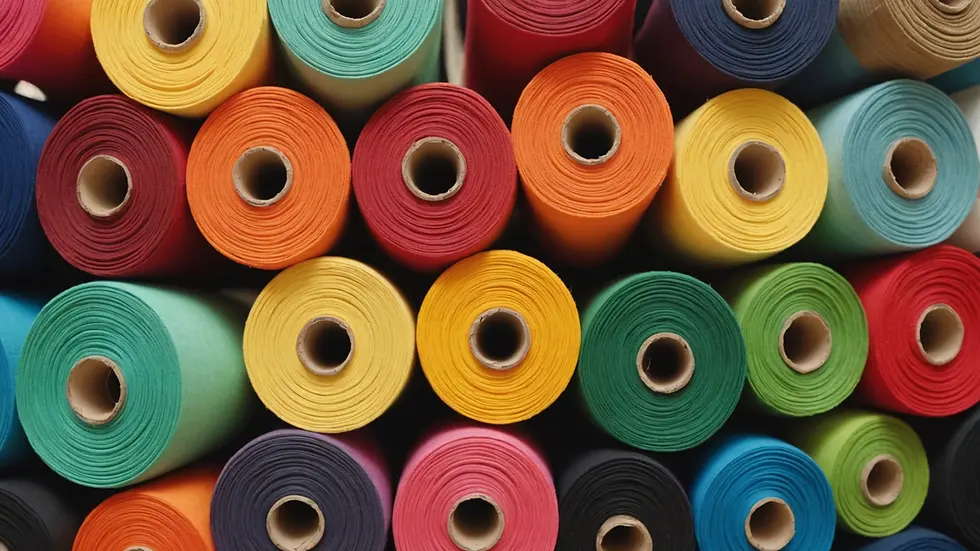Exploring the Evolving Relationship Between Art and Fashion in Contemporary Advertising
- DASSARIS

- Jan 24
- 3 min read
The intersection of art and fashion is more than just a trend—it's a cultural phenomenon that shapes how we see the world around us. In today’s advertising, this relationship has evolved dramatically, creating new avenues for engagement that appeal to our emotions and aesthetics. This post uncovers how art and fashion converge in modern advertising, producing narratives that inspire and resonate with consumers.
The Historical Context of Art and Fashion
Art and fashion have always influenced each other. Classic paintings often depict exquisite clothing, while fashion designers have drawn inspiration from various art movements throughout history. For example, during the Renaissance, clothing styles often reflected the detailed artistry of the period.
Fast forward to the 20th and 21st centuries, where photography and graphic design transformed marketing. An example of this is how the iconic images from the 1960s, particularly those by Richard Avedon and other fashion photographers, blended art with fashion imagery, creating lasting impressions. The connection between the two has only deepened with technological advancements.
The Role of Artistic Collaboration
Collaborations between fashion brands and artists are now commonplace and lead to campaigns that push creative boundaries. This partnership enriches visual storytelling and creates captivating narratives.
For instance, the collaboration between Louis Vuitton and Takashi Murakami brought an artist's flair to the luxury brand, featuring colorful, playful designs that sold millions of products worldwide. This partnership not only elevated the product's aesthetic but also created a cultural dialogue around luxury and modern art.
Visual Storytelling in Fashion Campaigns
Visual storytelling holds immense power in contemporary advertising. Brands use striking imagery to evoke emotions and connect on a deeper level.
A prime example is the Versace Spring/Summer 2021 campaign, which employed bold colors and dynamic compositions to create a sense of drama and excitement that went beyond mere product showcase. By using artistic techniques like abstraction and surrealism, brands can offer consumers immersive experiences. This method often leads to higher engagement rates—with reports indicating that campaigns using strong visual storytelling saw up to a 70% increase in consumer interest.

The Influence of Art Movements
Art movements such as Pop Art, Surrealism, and Cubism have profoundly impacted the fashion industry.
Brands like Moschino often replicate the boldness of Warhol's Pop Art, leading to vibrant clothing that challenges consumer conventions. One notable campaign featured a line with bold graphics based on everyday products, such as Campbell's Soup, resulting in increased sales and buzz around the collection.
Sustainability and Ethical Considerations
As consumers become more eco-conscious, many fashion brands are leaning into sustainability. This shift aligns well with contemporary art, where themes of environmental awareness are prevalent.
Innovative campaigns, like Stella McCartney's, highlight sustainable materials and showcase products that tell a story about eco-friendliness. Collaborations with artists who focus on environmental themes can significantly enhance a brand's credibility. Research shows that 70% of consumers prefer brands that commit to sustainability, making it a vital consideration in today’s advertising.

The Digital Age: New Perspectives
Digital technology has transformed how art and fashion interact. Online platforms allow brands to explore new artistic styles and engage with a global audience.
For instance, brands like Gucci effectively use social media to create artful visuals that engage their followers, leading to millions of views and shares. Augmented and virtual reality technologies are further expanding this landscape, as brands create 3D experiences that allow consumers to interact with both clothing and art in innovative ways.
The Future of Art and Fashion in Advertising
As the bond between art and fashion strengthens, we can expect advertising to explore even more creative frontiers. Future campaigns may focus on current cultural themes, utilize emerging art forms, and promote interactive experiences that captivate audiences.
Authenticity and emotional connection will likely push brands toward artistic collaborations. This synergy will not only redefine visual aesthetics but also inspire conversations around crucial issues such as culture and sustainability.
Reflecting on the Art-Fashion Connection
The relationship between art and fashion in today's advertising landscape is vibrant and ever-changing. As brands rely more on artistic collaboration and innovative storytelling, they create campaigns that resonate deeply with audiences. This connection enriches our appreciation of both fields and fosters new dialogues in culture and creativity.
Art and fashion are intertwined in ways that enhance our experiences and encourage us to view the world through a different lens. Looking ahead, the dialogue between these two powerful forces promises to evolve, shaping how we understand both art and fashion in society.










































